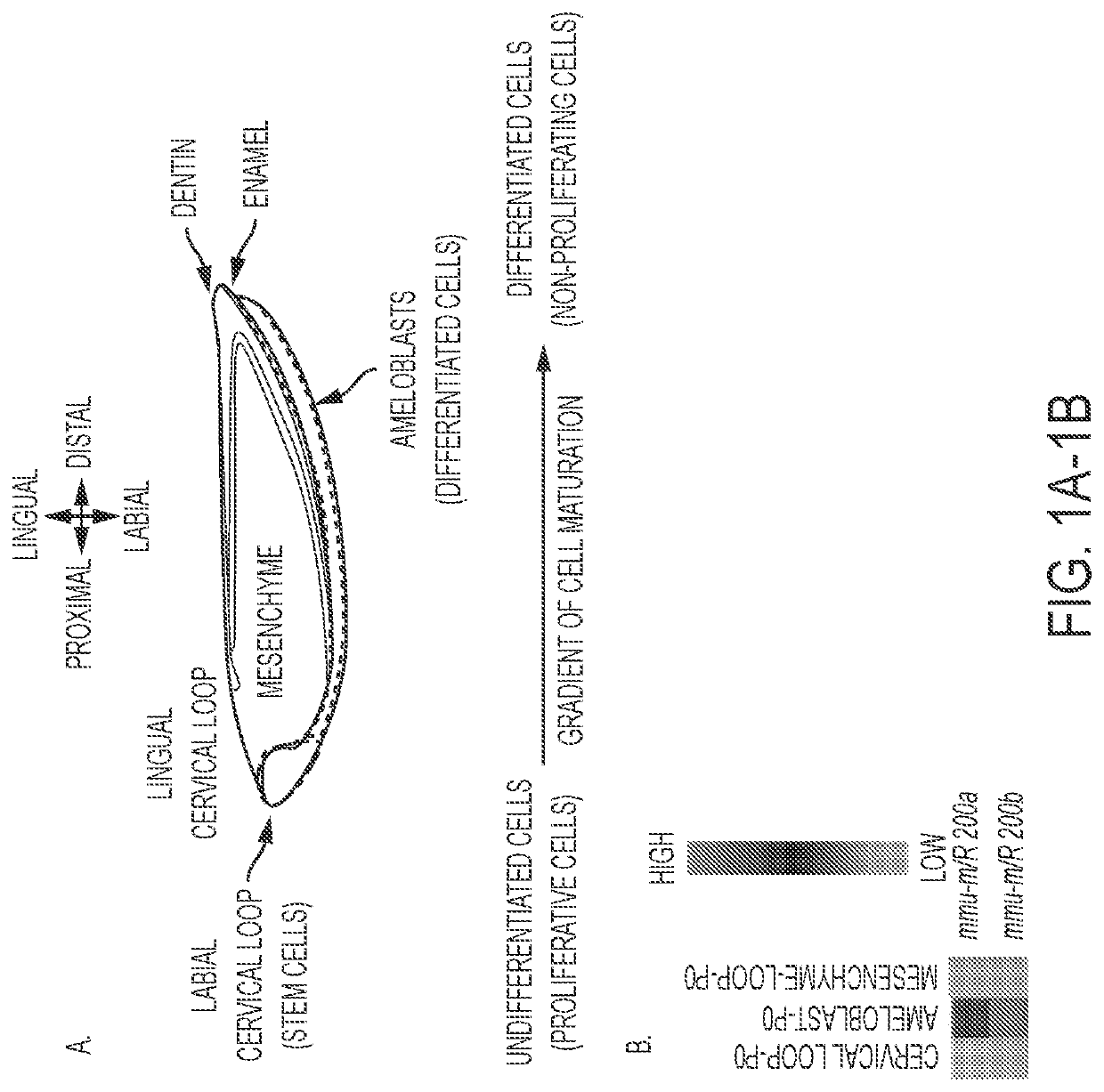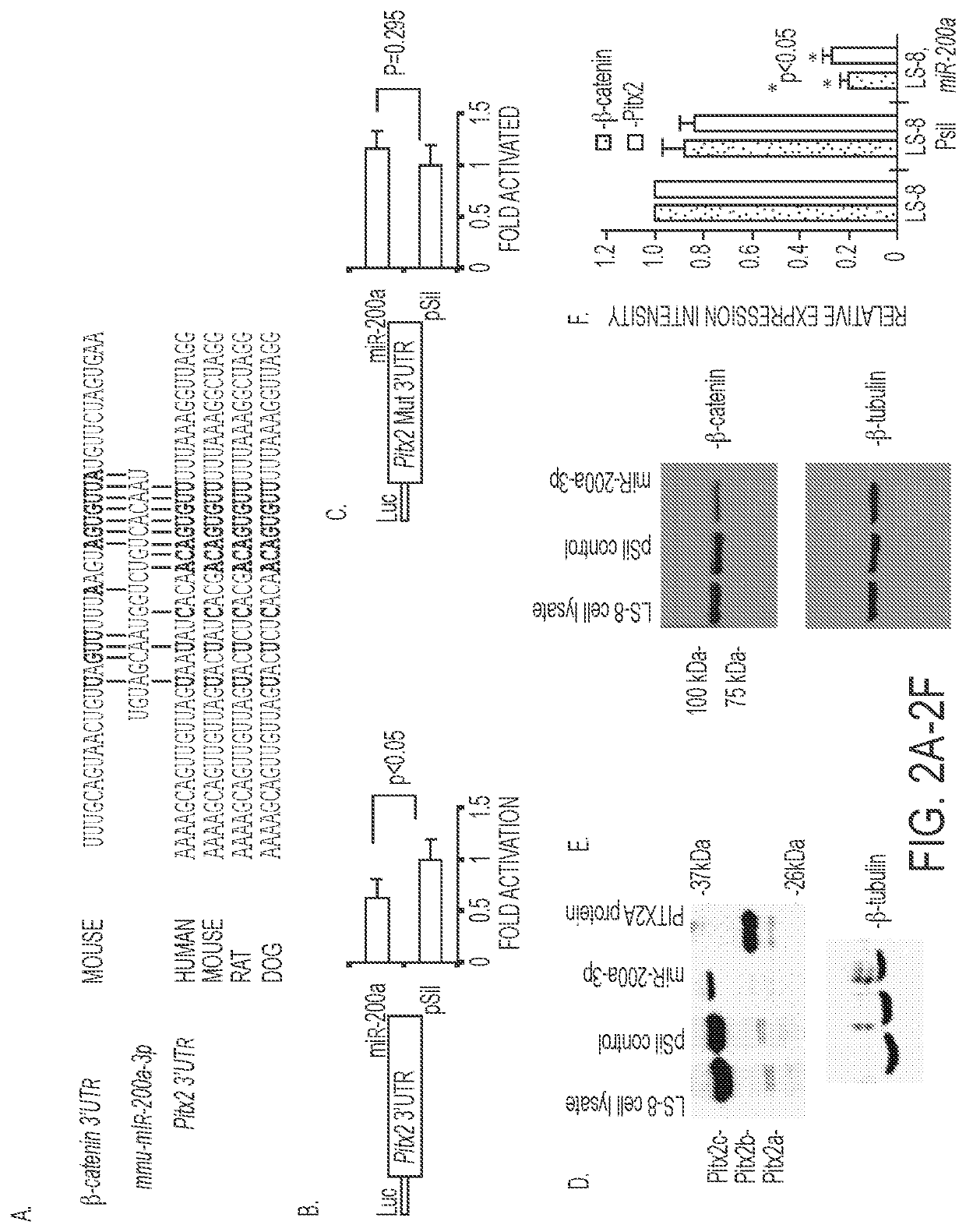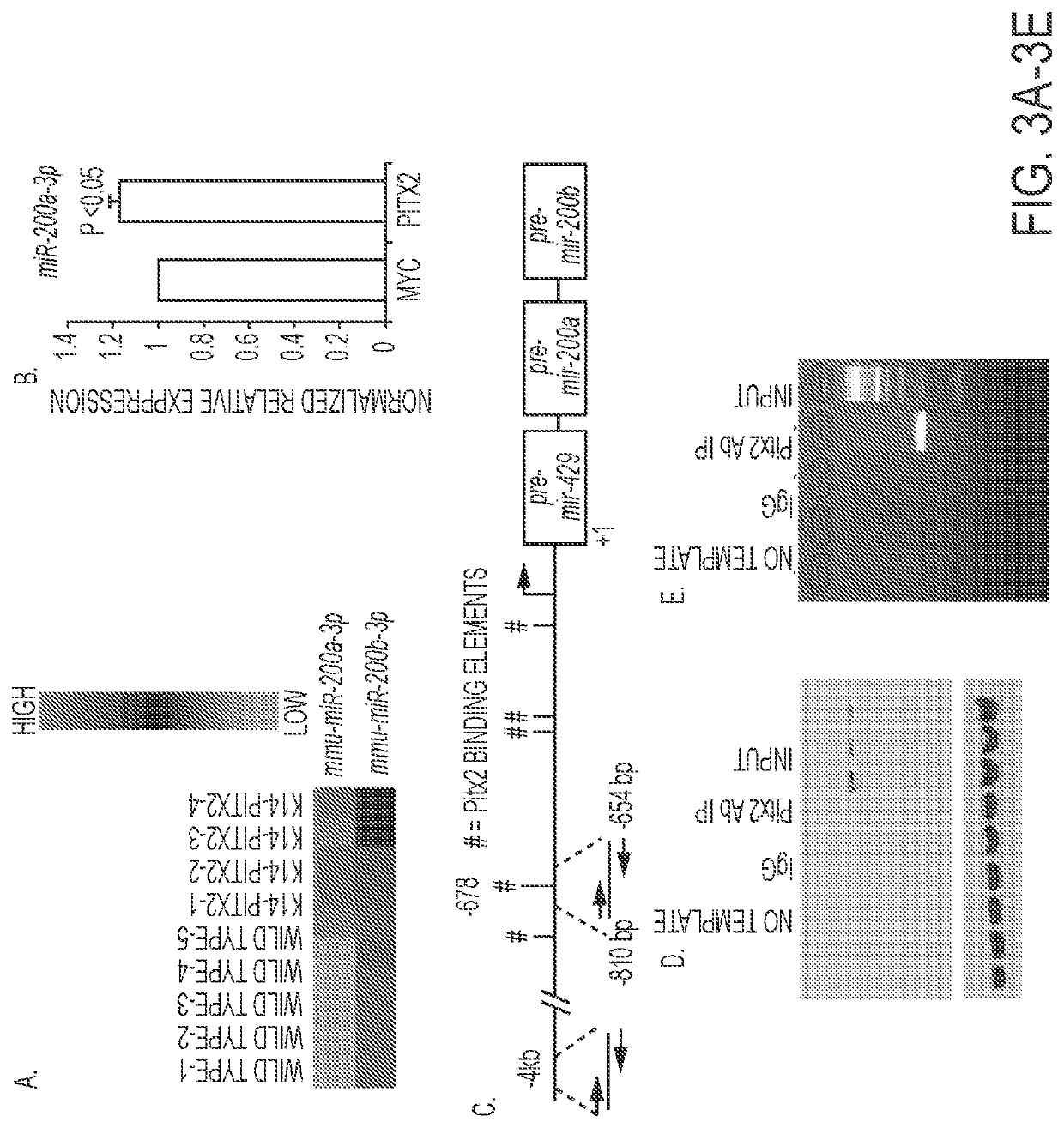Methods to generate epithelial cells
a technology of epithelial cells and methods, applied in the field of methods to generate epithelial cells, can solve the problems of inconvenient procedures, less than optimal metal composition, and limited amount of material
- Summary
- Abstract
- Description
- Claims
- Application Information
AI Technical Summary
Benefits of technology
Problems solved by technology
Method used
Image
Examples
example 1
A Pituitary Homeobox 2 (Pia2):microRNA-200a-3p:Beta-Catenin Pathway Converts Mesenchyme Cells to Amelogenin-Expressing Dental Epithelial Cells
Background: An efficient method is required for converting somatic cells to specific cell fates.
Results: A combination of Pitx2 and miR-200a-3p promotes dental epithelial gene expression in cells.
Conclusion: A two-step method efficiently converts mesenchyme cells to dental epithelial cells.
Significance: A new method to generate dental epithelial cells, which are difficult to isolate, is identified for use in regeneration and repair.
[0165]Pitx2, Wnt / β-catenin signaling and microRNAs (miRs) play a critical role in the regulation of dental stem cells during embryonic development. As described herein, a Pitx2:β-catenin regulatory pathway involved in epithelial cell differentiation and conversion of mesenchyme cells to amelogenin expressing epithelial cells via miR-200a has been identified. Pitx2 and β-catenin are expressed in the labial incisor ce...
PUM
| Property | Measurement | Unit |
|---|---|---|
| Tm | aaaaa | aaaaa |
| temperatures | aaaaa | aaaaa |
| Tm | aaaaa | aaaaa |
Abstract
Description
Claims
Application Information
 Login to View More
Login to View More - R&D
- Intellectual Property
- Life Sciences
- Materials
- Tech Scout
- Unparalleled Data Quality
- Higher Quality Content
- 60% Fewer Hallucinations
Browse by: Latest US Patents, China's latest patents, Technical Efficacy Thesaurus, Application Domain, Technology Topic, Popular Technical Reports.
© 2025 PatSnap. All rights reserved.Legal|Privacy policy|Modern Slavery Act Transparency Statement|Sitemap|About US| Contact US: help@patsnap.com



